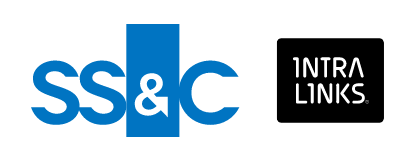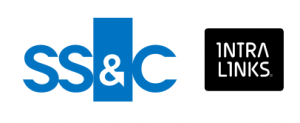The due diligence phase starts as soon as the target company has accepted an offer or a letter of intent (LOI). Typically spanning a 30- to 60-day duration, the period of due diligence can be extended upon mutual agreement.
But to ensure the time-efficient completion of this process, a well-detailed M&A documents checklist and proper preparation are needed.
In this article, we’ll guide you through the process of conducting the due diligence process, addressing such key questions as:
- What M&A legal documents are customarily provided to the buyer before they make an offer?
- What documents are typically furnished to the buyer after they’ve made an offer, specifically during the due diligence phase?
- What tools and techniques can help you navigate the M&A due diligence process more effectively?
As a bonus, we’ll offer you a comprehensive due diligence checklist. This checklist covers over 70 organizational documents categorized into seven comprehensive sections.

Pre-deal documents
Before we discuss the specific documents that can be signed before a due diligence process even starts, let’s review what principal agreements should be signed to initiate an M&A transaction.
To start with, mergers, stock purchases, and asset sales in business transactions are governed by specific agreements:
- Merger Agreements: A merger agreement outlines the legal process by which one company merges into another, facilitating a change in control over one of the companies. They often involve public M&A deals and include provisions for the cancellation of the target company’s shares and their conversion into the purchase price, details on share tendering, regulatory filings, and mechanisms for termination under specific conditions. In public transactions, they may also contain deal protections and regulatory compliance elements.
- Stock Purchase Agreements (SPAs): A stock purchase agreement serves as the primary documents in stock purchase transactions where ownership of stock is transferred. They facilitate the transfer of stock, sometimes involving physical delivery of stock certificates to the buyer in exchange for the purchase price. SPAs are similar to merger agreements in many aspects, featuring representations and warranties from both parties.
- Asset Purchase Agreements (APAs): An asset purchase agreement governs the sale of assets, defining the terms and conditions under which assets and liabilities are transferred from a seller to a buyer. These agreements differ from stock purchase agreements by specifically enumerating the assets and liabilities being conveyed, using legal instruments for transferring ownership, including representations about the sufficiency of acquired assets, and addressing shared assets between the seller’s business and the acquired business.
These agreements are among the main documents in an M&A transaction. They play a crucial role in structuring and regulating M&A transactions and serve distinct purposes depending on the nature of the deal.
NDA (Non-Disclosure Agreement)
In the context of a private M&A transaction, the process involves various documents, with the initial document often being a Non-Disclosure Agreement (NDA) or Confidentiality Agreement (CA).
The NDA serves to maintain confidentiality among potential buyers, establish engagement terms, limit third-party disclosures, and dictate terms both parties must accept.
Such arrangements can be structured as one-way or mutual NDAs. A one-way NDA obligates the receiving party to safeguard disclosed information, while a mutual NDA protects information shared by both parties.
NDAs commonly have a clear definition of what information is considered confidential — typically encompassing product details, customer data, financials, and more. Additional common elements in confidentiality agreements include defining the purpose of disclosing confidential information, protocols for returning or destroying such information, restrictions on its use, and clauses ensuring the enforceability of the entire agreement.
The Indication of Interest (IOI)
In the M&A process, as the pool of potential buyers narrows, some buyers will provide an Indication of Interest (IOI).
An IOI is a non-binding formal letter expressing genuine interest in purchasing the company. It typically outlines an approximate valuation, sources of financing, due diligence requirements, and a preliminary transaction structure. The goal of an IOI is to filter out less serious buyers and identify those with genuine interest and industry expertise.
While an IOI is a crucial early step in gauging buyer interest and credibility, it doesn’t guarantee the completion of a transaction, and the M&A process can take various routes, with some deals going straight to the LOI stage.
LOI (Letter of Intent)
Letters of Intent (LOIs) are concise, mostly non-binding documents signed by parties engaged in potential M&A transactions. These documents outline the fundamental framework of the transaction, covering aspects such as the target company, the proposed purchase price (or a price range), the transaction’s structure, contingencies (e.g., buyer financing terms), covenants, and indemnification provisions.
While LOIs are not legally binding, they serve as a useful tool for simplifying the negotiation process. By investing some extra effort in drafting a well-defined LOI at the outset, parties can minimize the risk of committing additional resources to a full-scale due diligence, negotiation, and definitive agreement drafting process, only to find out that a deal may not materialize.
Unlike IOI, an LOI is a more formal document that provides a final, specific price and deal structure, and it often includes exclusivity provisions. Some deals progress directly to the LOI stage without an IOI, especially when buyers are confident in making a firm offer.
Exclusivity agreement
Exclusivity agreements are brief, typically one to two-page contracts in which a seller commits to refrain from seeking or continuing discussions with third parties regarding the sale of the target company for a specified period (typically lasting 15-60 days).
These agreements are typically favored by buyers who wish to avoid competing with other potential buyers. Sellers, on the other hand, often enter into exclusivity agreements with reluctance, as it might limit their ability to maximize the transaction’s value by discouraging competing offers.
Nevertheless, many buyers insist on exclusivity, as it incentivizes them to invest time and resources in thorough due diligence, negotiating an LOI, or finalizing transaction agreements. If you’re looking to purchase an exclusivity agreement, you can find one here.
Due diligence documents
Here’s what you should disclose before accepting the offer and initiating your due diligence for M&A:
- Confidential information memorandum (CIM)
- Profit and loss statements (P&Ls)
- Balance sheets
- A summary or abstract of the lease (excluding the entire document)
- Equipment list
- Sales literature and brochures
And here’s what should be shared after the offer is accepted, during the due diligence process:
- Federal income tax returns
- Bank statements
- Invoices and receipts
- The full lease document
- Leases, including premises and equipment leases
- Third-party contracts, such as supplier or vendor agreements
- Sales and use tax reports
- Staffing and payroll-related documents, including job descriptions and employment contracts
- Insurance-related documents, encompassing workers’ compensation, health, and liability insurance
- Equipment inspection reports
- Licenses and permits
- Marketing, advertising, and promotional materials
- Environmental documents and inspection reports
- Franchise-related documentation
But please remember that these documents represent a bare minimum of the information that could be requested. In our another comprehensive article we offer a more comprehensive list of all the documents the seller would need to evaluate the target company.
Essential tools for M&A document management
Managing the extensive paperwork in mergers and acquisitions (M&A) can be a daunting task. To streamline this process and ensure efficiency, it’s essential to leverage the right due diligence software.
One of the M&A best practices is the use of virtual data rooms (VDRs). Here, we’ll explore the significance of VDRs in M&A document management and introduce other valuable software solutions.
1. Workflow automation tools
Workflow automation tools can be particularly valuable for M&A document management. They allow you to set up automated processes for document routing, approval, and archiving. By automating repetitive tasks, you can reduce the risk of errors and free up valuable time for more strategic activities during the M&A process.
2. Cloud-based storage solutions
Cloud-based storage solutions like Google Drive, Dropbox, and Microsoft OneDrive are valuable for keeping documents accessible and secure. These platforms offer collaboration features, document versioning, and the ability to access documents from various devices, making them useful for sharing non-sensitive documents in the M&A process.
3. Virtual data rooms (VDRs)
An M&A virtual data room is a secure online platform designed to store, share, and manage confidential documents related to M&A transactions. They offer several advantages, including:
- Enhanced security: VDRs provide top-tier security features like encryption, access controls, and audit trails to protect sensitive information.
- Efficient collaboration: They facilitate seamless collaboration between multiple parties, allowing authorized users to access and work on documents in real-time, even from remote locations.
- Document organization: VDRs help categorize, index, and structure documents for easy retrieval and review, ensuring all parties can quickly locate the necessary information.
- Due diligence support: VDRs simplify the due diligence process by allowing potential buyers or investors to access relevant documents swiftly and securely.
- Customization: These platforms can be customized to fit the specific needs of your M&A transaction, ensuring a tailored solution for your document management requirements.
Ideals

- Access controls
- Built-in viewer
- Full-text search
- Auto-indexing
- Customizable branding
- Advanced Q&A
- In-app live chat support 24/7
- 30-second chat response time
Intralinks

- Access controls
- Built-in viewer
- Full-text search
- Auto-indexing
- Customizable branding
- Advanced Q&A
- In-app live chat support 24/7
- 30-second chat response time
SmartRoom

- Access controls
- Built-in viewer
- Full-text search
- Auto-indexing
- Customizable branding
- Advanced Q&A
- In-app live chat support 24/7
- 30-second chat response time
Box

- Access controls
- Built-in viewer
- Full-text search
- Auto-indexing
- Customizable branding
- Advanced Q&A
- In-app live chat support 24/7
- 30-second chat response time
Citrix

- Access controls
- Built-in viewer
- Full-text search
- Auto-indexing
- Customizable branding
- Advanced Q&A
- In-app live chat support 24/7
- 30-second chat response time
Essentially, virtual data rooms combine the features of a workflow automation tool, a project management solution, and a cloud storage instrument — with a more advanced level of security than any of them offers.
| Now that you know what documents to prepare for a due diligence phase of an M&A transaction, feel free to check out the list of questions to ask when investing in a business. |
Key takeaways
- The due diligence phase of an M&A transaction is a crucial step that requires meticulous organization. To ensure its success, a comprehensive M&A documents checklist is essential.
- In this article, we’ve explored the significance of various documents typically involved in due diligence, from non-disclosure agreements to letters of intent and exclusivity agreements.
- Our detailed and ready-to-use due diligence checklist encompasses over 70 organizational documents to ensure thorough preparation to this time-consuming process.
- For maximum result, the combination of document management practices and the right software solutions should be used to contribute to the success of M&A transactions.

